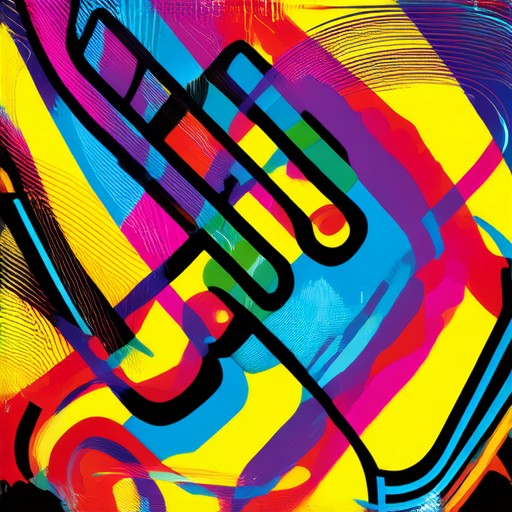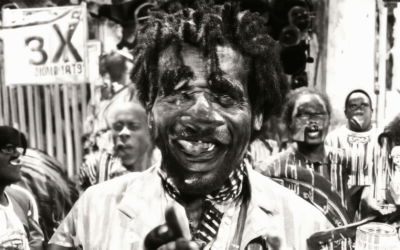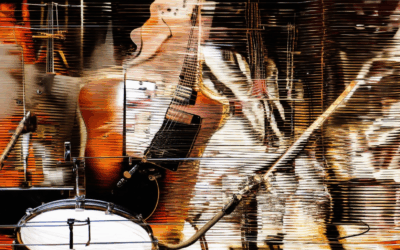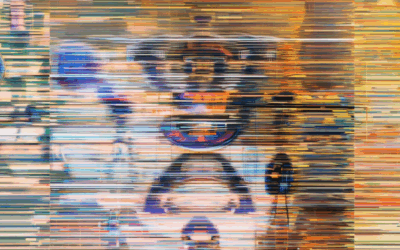Funk music has long been celebrated for its unique rhythm and groove, which lies at the heart of its soulful essence. The intricate patterns and beats that define funk music are not just mere musical elements—they form the foundation of its identity and appeal. From the syncopated basslines to the hypnotic drum patterns, the grooves and patterns of funk music create a distinct sound that resonates deeply with listeners. Understanding these elements is essential for anyone looking to appreciate the genre’s rich history and its lasting impact on music culture. Whether you’re a seasoned musician or a casual listener, the rhythmic complexity and soulful energy of funk music offer a fascinating exploration of its artistic depth.
Key Takeaways
– Rhythmic Complexity: Funk music stands out with intricate, polyrhythmic grooves that create an unpredictable yet danceable feel.
– Deep Basslines: The prominent basslines in funk are central to its sound, driving the music and often leading melodies.
– Syncopated Rhythms: Funk’s syncopated beats, placing accents on off-beats, add tension and energy to its tracks.
– Tight Ensemble Play: Seamless interactions between horns, vocals, and rhythm sections define the genre’s collaborative spirit.
– Improvisation and Solos: Funk musicians excel in spontaneous improvisation, showcasing their skill through memorable melodies and rhythms.
– Cultural and Social Influence: Funk emerged as a voice for marginalized communities, reflecting struggles and triumphs through its music.
– Global Influences: The genre’s grooves transcend borders, blending with jazz, blues, and Afro-Latin traditions to create a universal sound.
– Danceability: Funk’s grooves are inherently danceable, making it a timeless choice for movement and celebration.
– Vocal Styles: Funk vocalists bring raw emotion and storytelling to the forefront, complementing the music’s energy.
– Instrumentation Variety: From electric guitars to talkboxes, funk’s diverse instruments create a rich, versatile sound.
– Breakdowns and Solos: Extended instrumental sections highlight musicians’ technical skills and creative expression.
– Community and Grassroots Movement: Funk fostered a strong sense of unity and resilience, inspiring future generations of artists.
– Time Signature and Tempo Changes: Unconventional timings add dynamism, keeping listeners engaged.
– Collaborations and Cross-genre Influence: Funk’s impact on hip-hop, rock, and electronic music is undeniable.
– Emotional Expression: Funk music transcends beats, conveying deep emotions and stories through its interplay and lyrics.
– Live Performance Roots: Its live tradition preserves authenticity and vitality, feeding the genre’s continued relevance.
– Legacy and Evolution: Funk evolves while staying true to its core, ensuring its grooves remain fresh for new audiences.
– Preservation of History: Efforts like Tiger Funk document funk’s heritage, honoring its contributors and inspiring future artists.
– Continued Relevance: Funk’s timeless appeal endures, resonating with listeners worldwide through its energy and emotional depth.

What Defines the Unique Grooves and Patterns in Funk Music?
The unique grooves and patterns in funk music are characterized by their driving rhythms, syncopation, and intricate basslines, creating a dynamic and infectious sound. Here are the key elements that set funk apart:
- Syncopation
- Syncopation is the heartbeat of funk, where the rhythm is placed on the “off-beat,” creating a sense of tension and release. This is achieved through:
- Offbeat Rhythms: Beats are played on the weaker part of the beat cycle, giving music a forward momentum.
- Polyrhythms: Multiple rhythms are layered, creating complex patterns that add depth to the groove.
-
Basslines
- The bassline in funk is not just a supporting role but a star performer. It drives the rhythm, provides harmonic structure, and often takes the lead role in solos. Funk basslines are known for their:
- Walking Bass: A common technique where the bassline moves in a stepwise pattern, creating a walking bassline feel.
- Slap Bass: A technique where the bassist plays notes with a slapping motion, adding a percussive element to the sound.
-
Clave Rhythms
- Clave rhythms, often influenced by African and Latin music, are a hallmark of funk. They give the music a sense of motion and movement, with:
- Osu (On, Off, Up): A common clave pattern that creates a cyclical feel.
- Guaguanco: Another clave-based rhythm that adds a Cuban influence to funk grooves.
-
Tempo Fluctuation
- Funk music often features tempo changes, with a sense of “swing” that allows the music to breathe. This flexibility means that even within a song, the rhythm can shift and evolve, keeping the listener engaged.
-
Swing Feel
- While funk is firmly rooted in a straight-ahead rock beat, it often incorporates a swing feel that gives it a loose, organic quality. This swing is particularly evident in the interplay between the bass and drums.
-
Dynamics
- Funk music uses dynamics effectively, with moments of quiet and loud playing that heighten the emotional impact. This contrast creates a sense of excitement and energy.
These elements work together to create the signature grooves and patterns that make funk music instantly recognizable and endlessly captivating. To dive deeper into the history and culture of funk, check out Tiger Funk’s comprehensive guides and artist profiles at Tiger Funk .
How to Recognize Grooves and Patterns in Funk Music
To recognize the grooves and patterns in funk music, focus on several key elements:
- Bassline Dominance : Funk music often features a prominent bassline that carries the melody. Listen for deep, thumping bass sounds that may even take soloistic roles, as seen in tracks like James Brown’s “Funky Drummer.”
- Polyrhythmic Rhythm : Funk is characterized by its complex, layered rhythms. Pay attention to the interplay between the snare drum’s syncopated patterns and the kick drum’s steady 2nd beat. This interplay creates the signature funky shuffle feel.
- Breakdowns : Many funk tracks include a mid-track breakdown where instruments like horns, vocals, or guitar take center stage. These sections often showcase the band’s improvisational skills and are a common feature in funk recordings.
- Use of Space : Funk music frequently employs pauses and rests to create a sense of space, allowing other instruments to shine. This sparse, yet impactful style is a hallmark of the genre.
- Syncopation and Rubato : Funk makes heavy use of syncopation, where beats fall on the offbeat, and rubato (tempo fluctuation) adds to the music’s dynamic quality. These techniques contribute to the intricate rhythmic patterns.
By focusing on these elements, you can better identify and appreciate the unique grooves and patterns that define funk music.

The Role of Grooves and Patterns in Funk Music’s Feel
Funk music’s grooves and patterns are integral to its distinctive feel, creating a dynamic and infectious rhythm that makes tracks both lively and memorable. The grooves in funk music are characterized by a deep, driving bassline that often features syncopated rhythms, giving the music a sense of movement and energy. This is exemplified in tracks by artists like James Brown and George Clinton, where the groove forms the foundation upon which melodic and harmonic patterns are built.
Patterns in funk music refer to the melodic and harmonic elements that give shape to the music. These patterns are often catchy and memorable, adding a layer of complexity that complements the rhythmic base. The interplay between these patterns and the groove creates a rich musical texture, making funk tracks both danceable and musically engaging. For instance, the iconic bassline and guitar riffs in “Get Lucky” by Daft Punk exemplify this dynamic interaction, where the groove drives the track forward while the patterns provide melodic interest.
The use of space in funk music further enhances its feel. There is a deliberate use of pauses and silences, which adds tension and creates a unique texture that keeps listeners engaged. This technique is particularly evident in funk jazz fusion works, such as those by Herbie Hancock, where the complexity of patterns and the drive of the groove combine to create a soundscape that is both musically sophisticated and energetically charged.
In essence, the grooves and patterns in funk music work together to create a feel that is both rhythmically compelling and melodically satisfying, making it a genre that continues to resonate with audiences worldwide.

What Distinguishes the Grooves and Patterns in Funk Music?
Funk music is renowned for its distinctive grooves and rhythmic patterns, which set it apart from other genres. These elements are integral to the genre’s identity and contribute to its unique appeal. Below are the key factors that define the grooves and patterns in funk music:
- Rhythmic Complexity :
Funk music is characterized by its intricate and polyrhythmic grooves. The interplay between the bassline, drums, and other instruments creates a complex rhythm that often feels unpredictable yet danceable. This complexity gives funk its signature feel and energy. - Deep Basslines :
A prominent feature of funk music is the deep, thumping basslines. These basslines are not merely a backdrop but are central to the composition, often taking lead roles in melodies and solos. The bassline in funk serves as a driving force that ties the music together. - Syncopated Rhythms :
Funk incorporates syncopated rhythms, where the accents fall on off-beats rather than the primary beat. This creates a sense of tension and release, making tracks feel both dynamic and infectious. Syncopation is a hallmark of funk drumming, as seen in iconic performances by drummers like James Brown’s Clyde Stubblefield. - Tight Ensemble Play :
Funk music often features tight ensemble playing, where the interaction between musicians is seamless. This collaboration allows for spontaneous improvisation and creates a sense of unity in the music. The interplay between horns, vocals, and rhythm sections is a defining trait of the genre. - Improvization and Solos :
Funk musicians are known for their exceptional skills in improvisation. Soloists, whether on saxophone, guitar, or vocals, often take center stage, showcasing their ability to craft memorable melodies and rhythms on the spot. This spontaneity adds a live, performative quality to the music. - Cultural and Social Influence :
Funk emerged as a reaction against the constraints of mainstream music during the late 1960s and early 1970s. It became a vehicle for social commentary and empowerment, particularly in African American communities. The music reflects the struggles and triumphs of marginalized groups, giving it a cultural significance that extends beyond just its musical elements. - Use of Space and Silence :
Funk music often employs pauses, silence, or a reduction in instrumentation to build tension and anticipation. This use of space creates a dramatic effect, making the moments when the music does resume playing all the more impactful. - Global Influences :
Funk draws influences from various musical traditions, including jazz, blues, and Afro-Latin music. This global influence is evident in the rhythms and instrumentation of classic funk tracks, making it a truly universal sound that appeals to a wide audience. - Danceability :
One of the most notable traits of funk music is its inherent danceability. The grooves are designed to get people moving, whether on the dance floor or in the car. The combination of a strong bassline and catchy melodies makes funk tracks timeless in their appeal. - Vocal Styles :
Funk vocalists often exhibit a raw, emotive style that complements the music’s energy. Singers like James Brown and George Clinton utilized their voices as tools for storytelling and emotional expression, adding another layer of depth to the genre. - Instrumentation Variety :
Funk music showcases a variety of instruments, including electric guitars, Hammond organs, clavinet, and even unconventional sounds like the talkbox. This diversity in instrumentation contributes to the genre’s versatility and richness. - Breakdowns and Solos :
Many funk tracks include extended instrumental breakdowns where soloists shine. These sections allow for technical display and creative expression, further highlighting the musicianship involved in the genre. - Community and Grassroots Movement :
Funk was a significant part of the grassroots music movement, particularly in cities like New York and Los Angeles. It served as a catalyst for other genres and continues to inspire new artists today. - Time Signature and Tempo Changes :
Funk music often uses unconventional time signatures and tempo changes to create a sense of unpredictability. This adds to the music’s dynamic nature and keeps listeners on their toes. - Collaborations and Cross-genre Influence :
Funk has influenced countless genres, from hip-hop to rock, and has seen collaborations with artists across different disciplines. Its impact on contemporary music is undeniable, making it a foundational element of many soundscapes. - Emotional Expression :
Funk music is not just about beats and rhythms; it also conveys deep emotions and stories. The interplay between the music and the lyrics creates a powerful emotional experience for listeners. - Live Performance Roots :
Funk music thrives in live settings, where the energy of the band and the audience feed off each other. This live performance tradition has helped preserve the genre’s authenticity and vitality. - Legacy and Evolution :
Despite its origins in the late 1960s, funk continues to evolve, with modern artists drawing inspiration from the genre’s core elements while updating them for new audiences. This legacy ensures that funk’s grooves and patterns remain relevant and celebrated. - Use of Space and Timing :
Musicians in funk often use space effectively, allowing silence or minimal instrumentation to heighten the impact of the moments when the music returns. This technique builds anticipation and keeps listeners engaged. - Community and Shared Culture :
Funk music fostered a strong sense of community among its creators and fans. It became a symbol of resilience and pride, particularly for African American artists who used it as a platform for self-expression and empowerment. - Innovative Drumming Techniques :
Funk drumming is renowned for its innovation, with techniques like the “Funky Drummer” by James Brown becoming iconic. Drummers in funk often serve as the backbone of the track, providing the essential groove that holds everything together. - Use of Technology :
While some funk records are recorded with a small group, others utilize technology to create layered sounds. This blending of traditional and modern elements shows the genre’s adaptability and willingness to embrace change. - Cultural Commentary :
Funk music has historically served as a tool for social commentary, addressing issues like racial inequality and economic struggles. Artists used their music to spread messages of hope and resistance, making it a powerful medium for change. - Global Adoption :
Funk’s infectious grooves have made it popular worldwide, with audiences in Europe, Asia, and beyond embracing the genre. Its universal appeal ensures that it remains a beloved choice for music lovers of all backgrounds. - Unique Soundscapes :
The combination of deep basslines, syncopated rhythms, and dynamic instrumentation creates a sound that is instantly recognizable as funk. This unique sonic identity has allowed the genre to carve out its own niche in the music world. - Collaborative Nature :
Funk often involves close-knit collaboratives, with bands like The Meters serving as backing tracks for numerous artists. This collaborative spirit has led to a wealth of great music and has ensured the genre’s enduring popularity. - Emphasis on Feel :
Above all, funk music prioritizes feel and groove. The primary goal is to create a satisfying musical experience that resonates with listeners on a primal level. This focus on emotion and connection is what makes funk music so compelling. - Influence on Modern Music :
Funk’s impact on contemporary music is profound, with genres like hip-hop, electronic, and rock all drawing from its wellspring of ideas. Its legacy continues to shape new generations of musicians and fans alike. - Preservation of History :
Efforts to preserve and celebrate funk history, through platforms like Tiger Funk, ensure that this important musical heritage is not forgotten. By documenting and promoting the genre’s contributions, we honor the artists who shaped it and inspire future generations. - Continued Relevance :
Despite its origins decades ago, funk remains relevant today. Its timeless appeal ensures that it continues to be discovered by new listeners, who are drawn in by its energy, creativity, and emotional depth.
By understanding these elements, it becomes clear why funk music’s grooves and patterns are so distinctive and cherished. The combination of rhythmic complexity, deep basslines, syncopated rhythms, and tight ensemble play creates a sound that is uniquely funk, leaving an indelible mark on music history.
What Makes Rhythms and Patterns in Funk Music So Distinctive?
Funk music’s rhythms and patterns are characterized by their syncopated beats, complex grooves, and innovative use of timing and phrasing. Here’s a breakdown of what sets funk music apart:
- Syncopated Beats : Funk music is defined by its syncopated rhythms, where the emphasis is placed on the off-beat rather than the regular beat. This creates a driving, propulsive feel that is both energetic and danceable.
- Walking Basslines : A hallmark of funk is the walking bassline, which moves in a steady, step-by-step manner. This pattern provides a solid foundation for the music, allowing other instruments to solo and create intricate melodies.
- Polyrhythms : Funk often incorporates polyrhythms, where multiple rhythms are layered together in a way that creates a sense of complexity and depth. This technique allows for a rich, textured sound that is both hypnotic and engaging.
- African Influences : Funk draws heavily from African musical traditions, particularly in its use of drumming techniques that reflect the rhythms found in African drumming, such as the djembe. This influence is evident in the tight, coordinated rhythms and the emphasis on collective ensemble playing.
- Instrument Interplay : Funk music thrives on the interplay between its instruments. The bass, drums, and percussion work together in a tightly-knit rhythm section, often taking turns to lead and support each other. This collaboration creates a full-bodied, layered sound that is both dynamic and expressive.
- Groove-Oriented Playing : Funk music is groove-oriented, meaning that the primary focus is on creating a satisfying, danceable rhythm. This approach makes funk music accessible and appealing to a wide audience, regardless of their musical background.
These elements combine to create a unique and identifiable sound that has influenced countless music genres, from hip-hop to contemporary pop. The rhythms and patterns of funk music continue to resonate with listeners worldwide, thanks to their energy, innovation, and emotional depth.

The Role of Grooves and Patterns in Funk Music’s Soulful Energy
Funk music’s soulful energy is deeply rooted in its rhythmic foundation, which is driven by intricate grooves and patterns. These elements work together to create a unique soundscape that resonates emotionally with listeners.
- Rhythmic Foundation: Funk music’s heartbeat lies in its grooves, often provided by deep basslines and tight drumming. These rhythms form the backbone of tracks, giving them a raw, driving energy that feels alive and organic.
- Melodic Interaction: While funk may not always showcase complex melodies, the interplay between instruments and vocals adds soul. Call-and-response patterns between guitarists, horns, and vocals create a sense of community and emotion.
- Dynamics and Timing: Funk music thrives on contrasts. Sharp breaks, sudden shifts in tempo, and dramatic pauses create tension, releasing it with a powerful groove. This interplay of timing keeps listeners engaged and connected to the music’s spirit.
- Cultural and Social Context: Funk emerged from African American communities, drawing from blues, jazz, and spirituals. Its grooves and patterns reflect the struggles and triumphs of these communities, infusing the music with a profound sense of soul.
Examples like James Brown’s “Get Up (I Feel Like a Sex Machine)” and Curtis Mayfield’s “We Got to Have Peace” exemplify how these elements come together to create a soulful energy. The interplay of tight rhythms and emotive melodies, combined with cultural resonance, makes funk music timeless.
In conclusion, the grooves and patterns in funk music are more than just technical aspects—they are the essence of its soulful energy, connecting listeners to the music’s rich heritage and universal emotions.





0 Comments